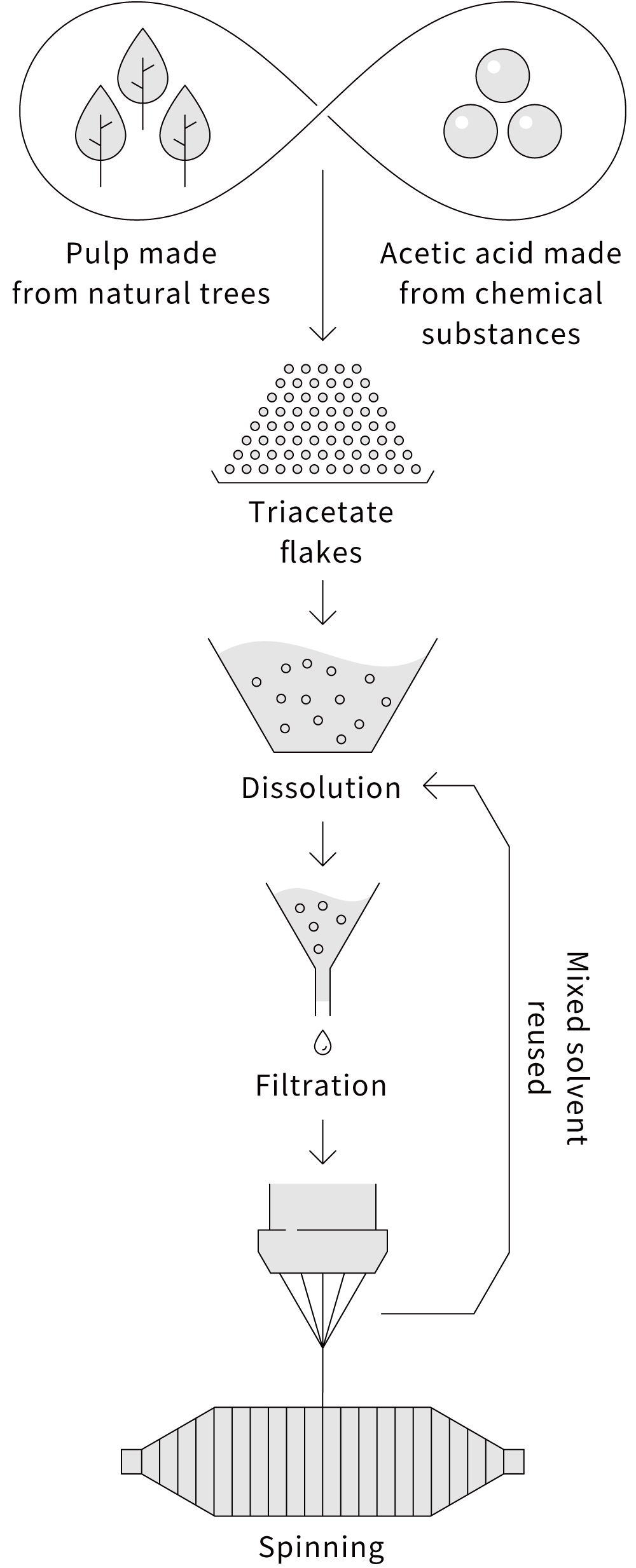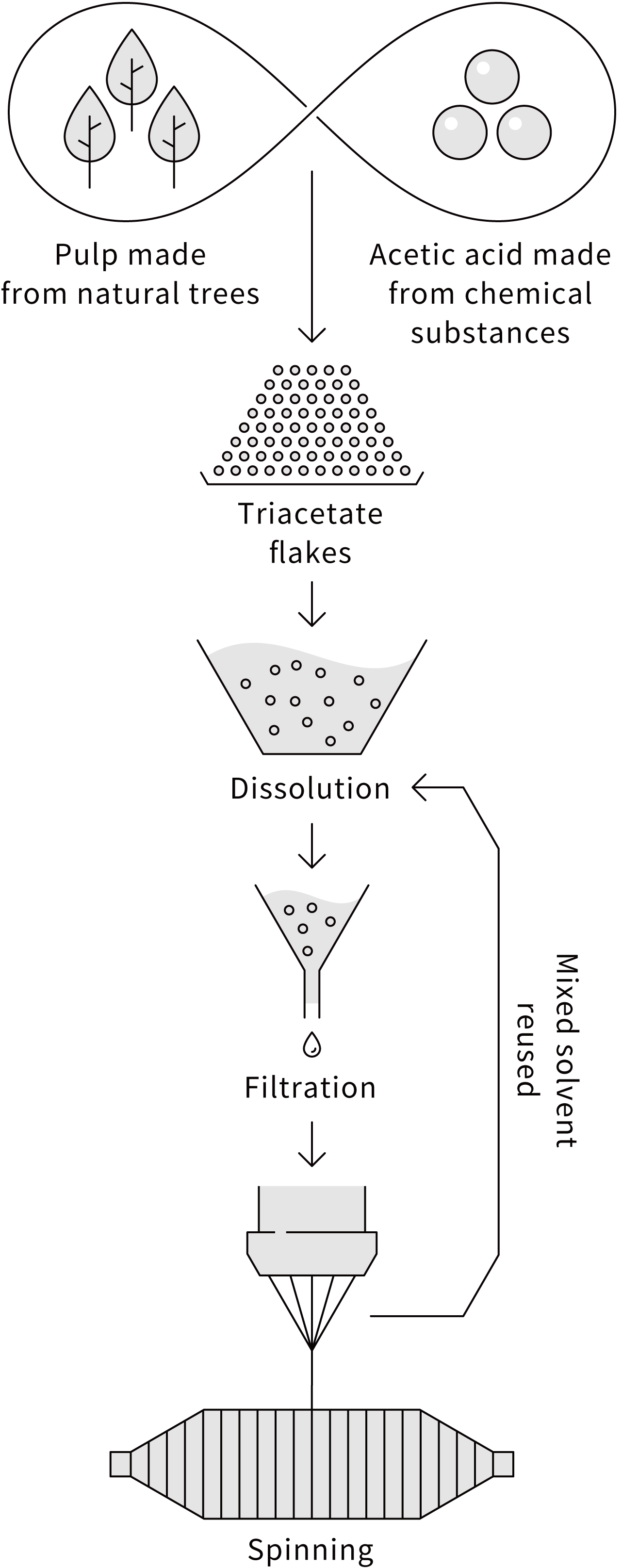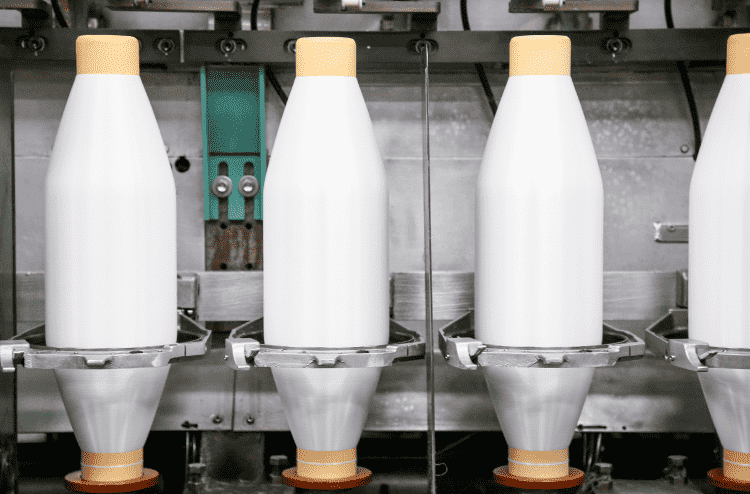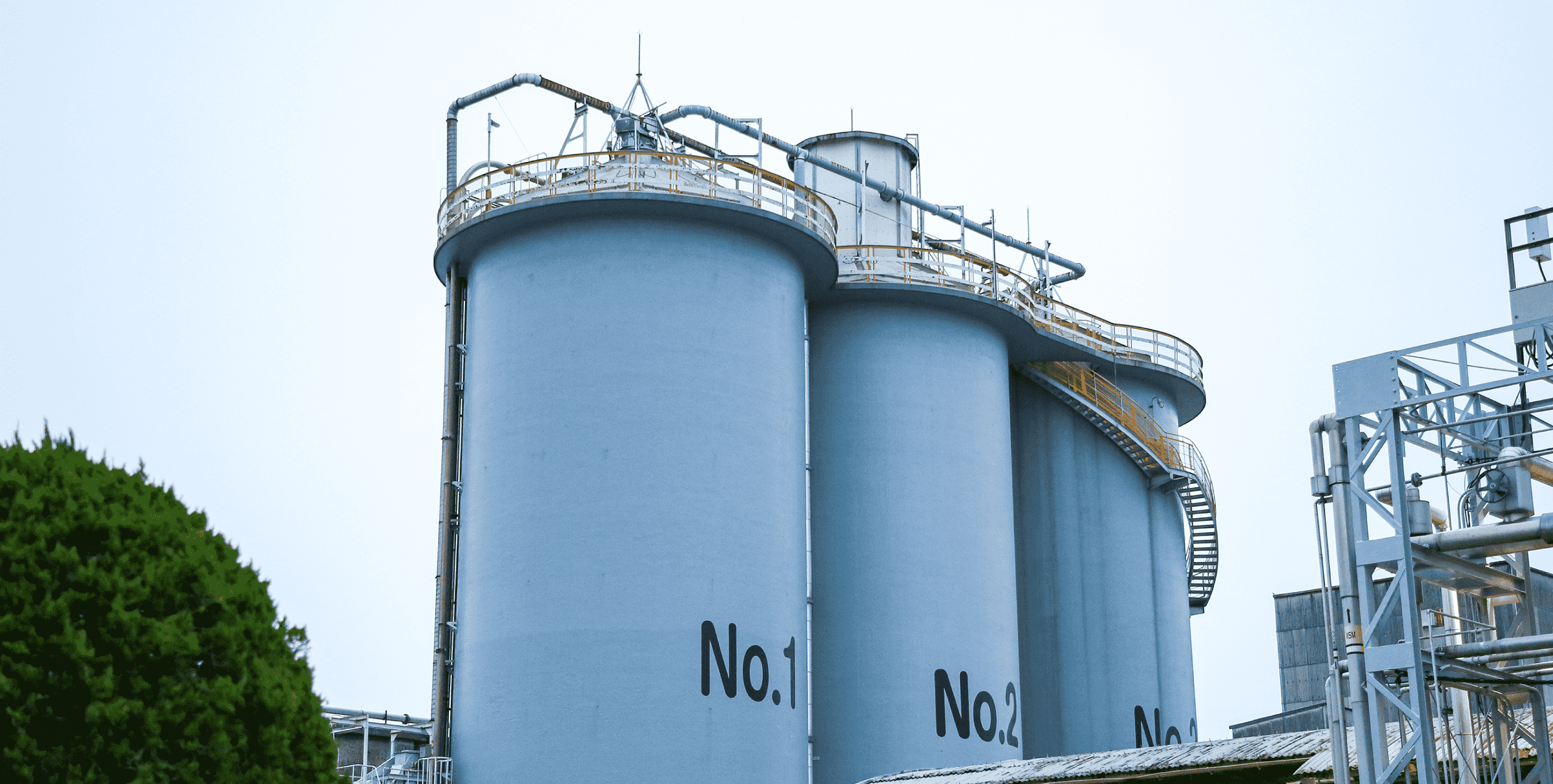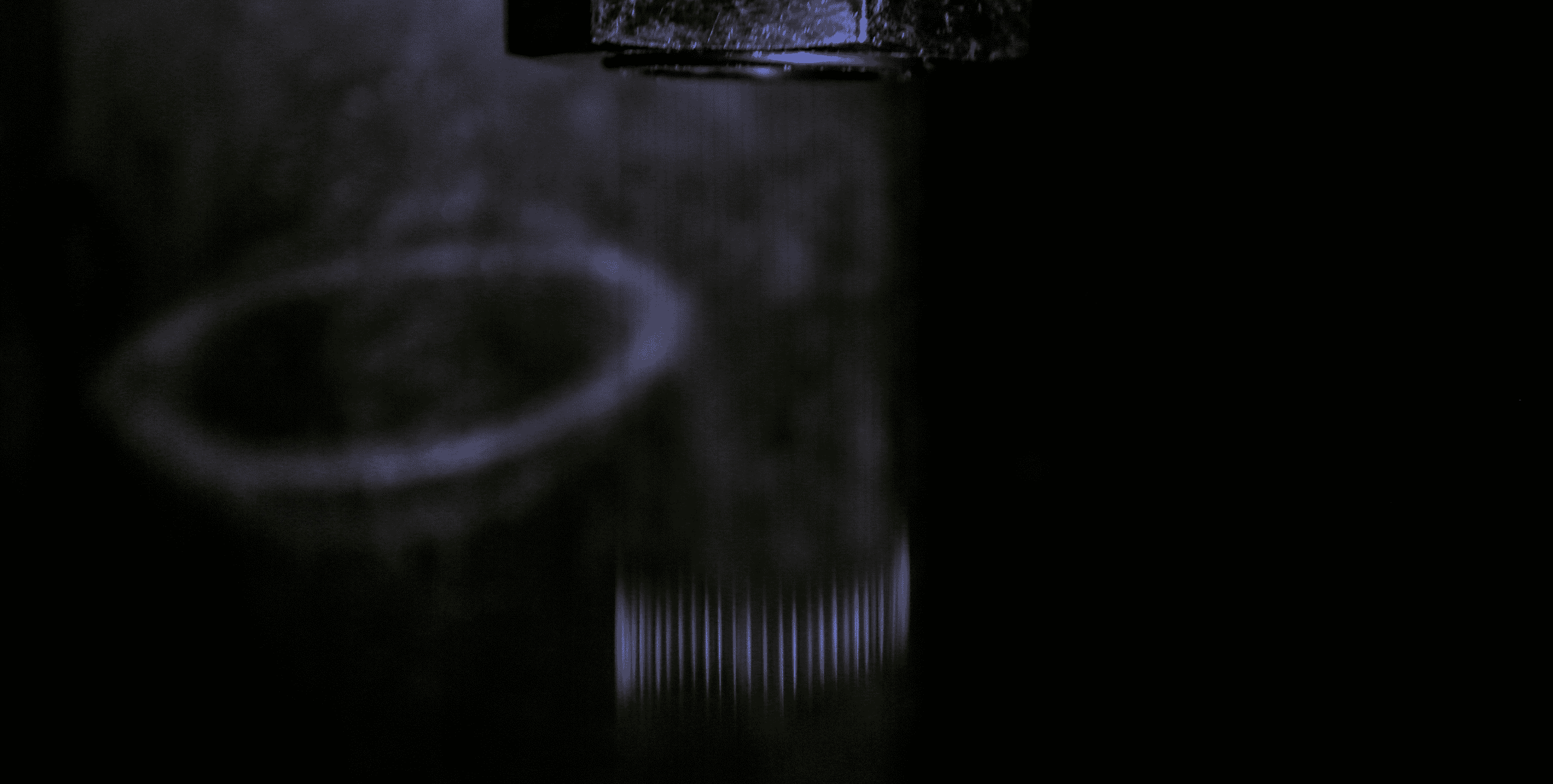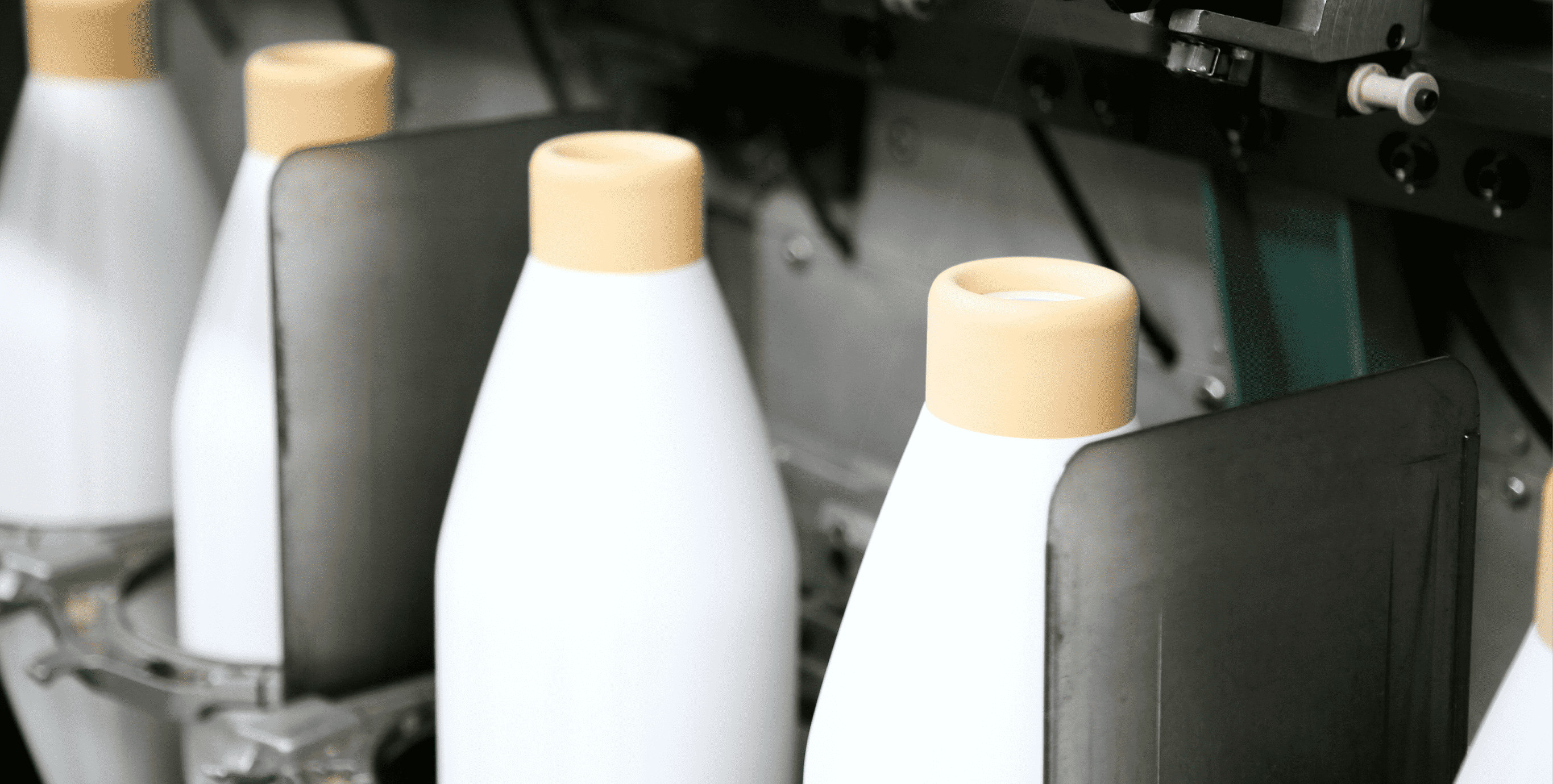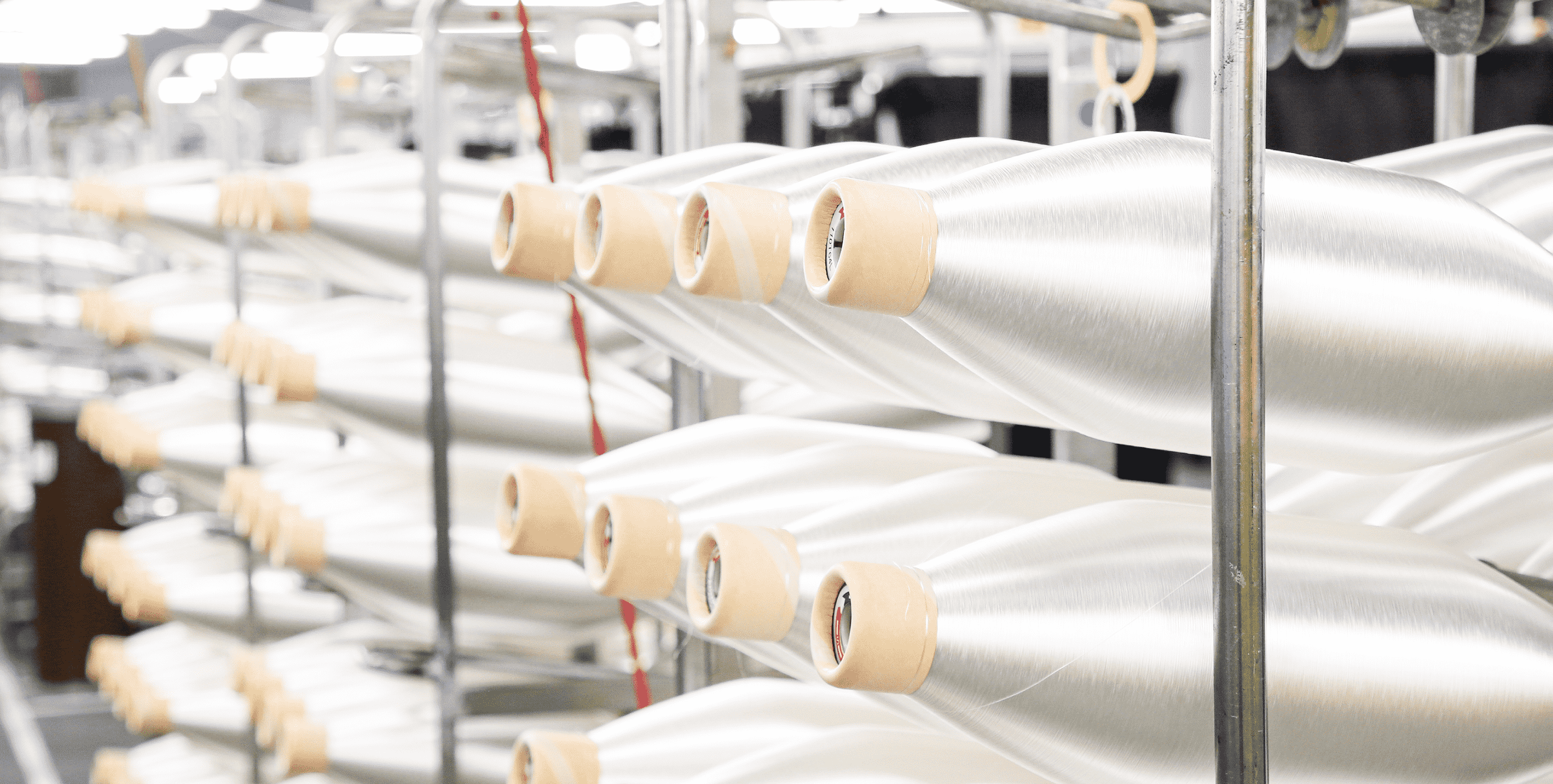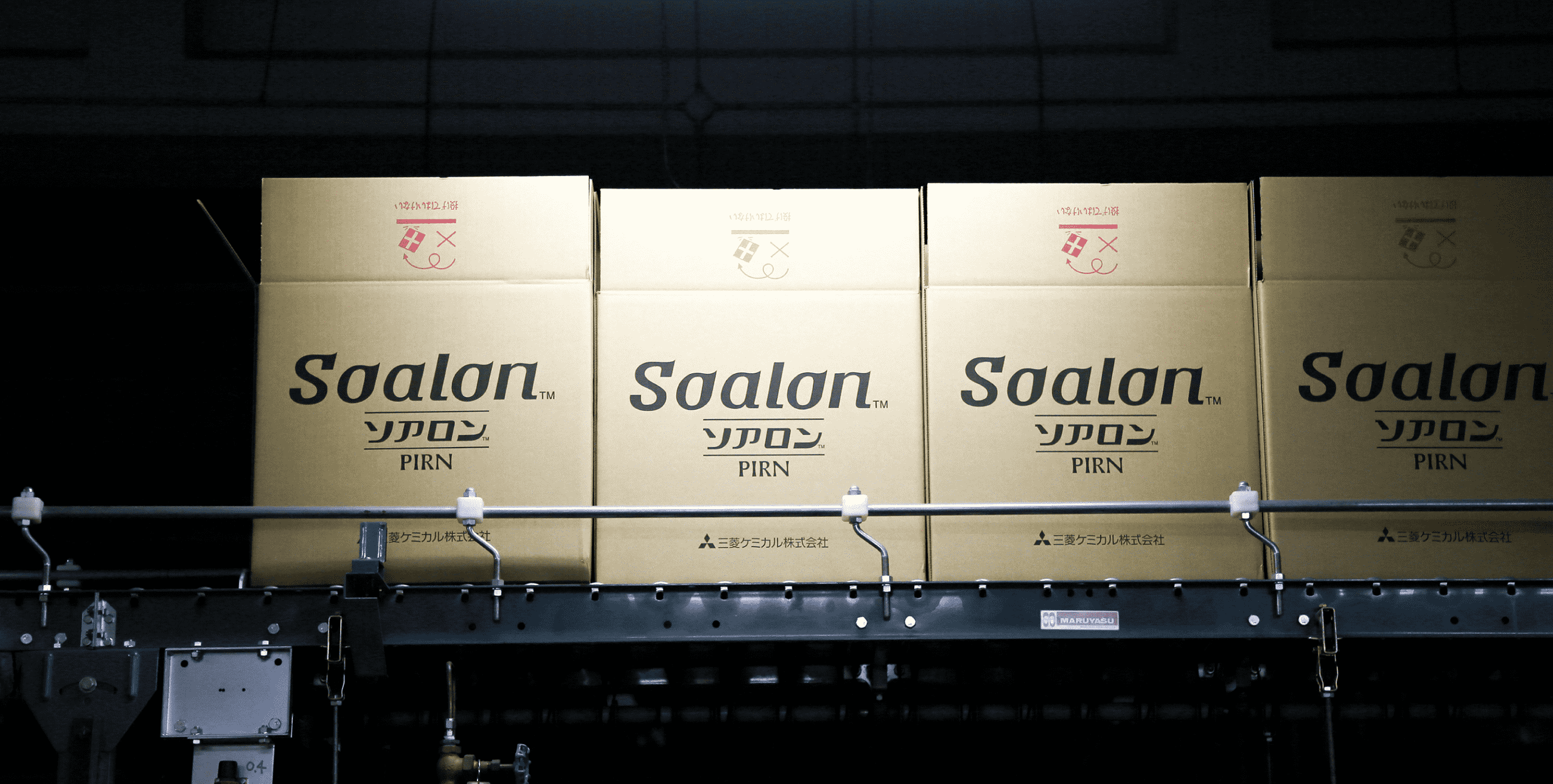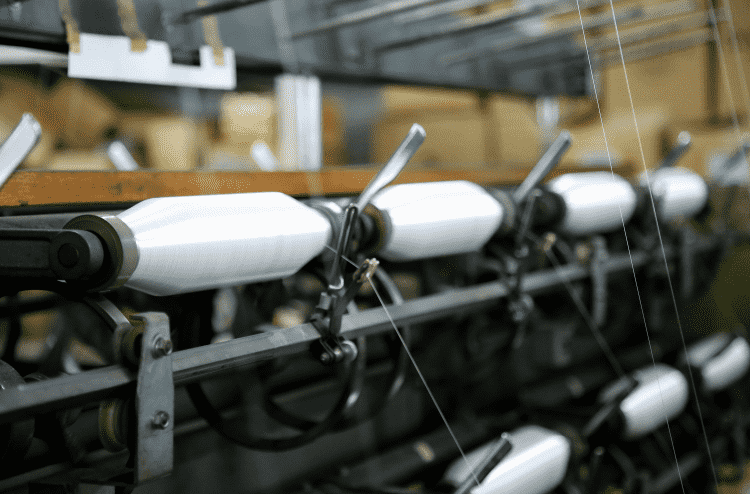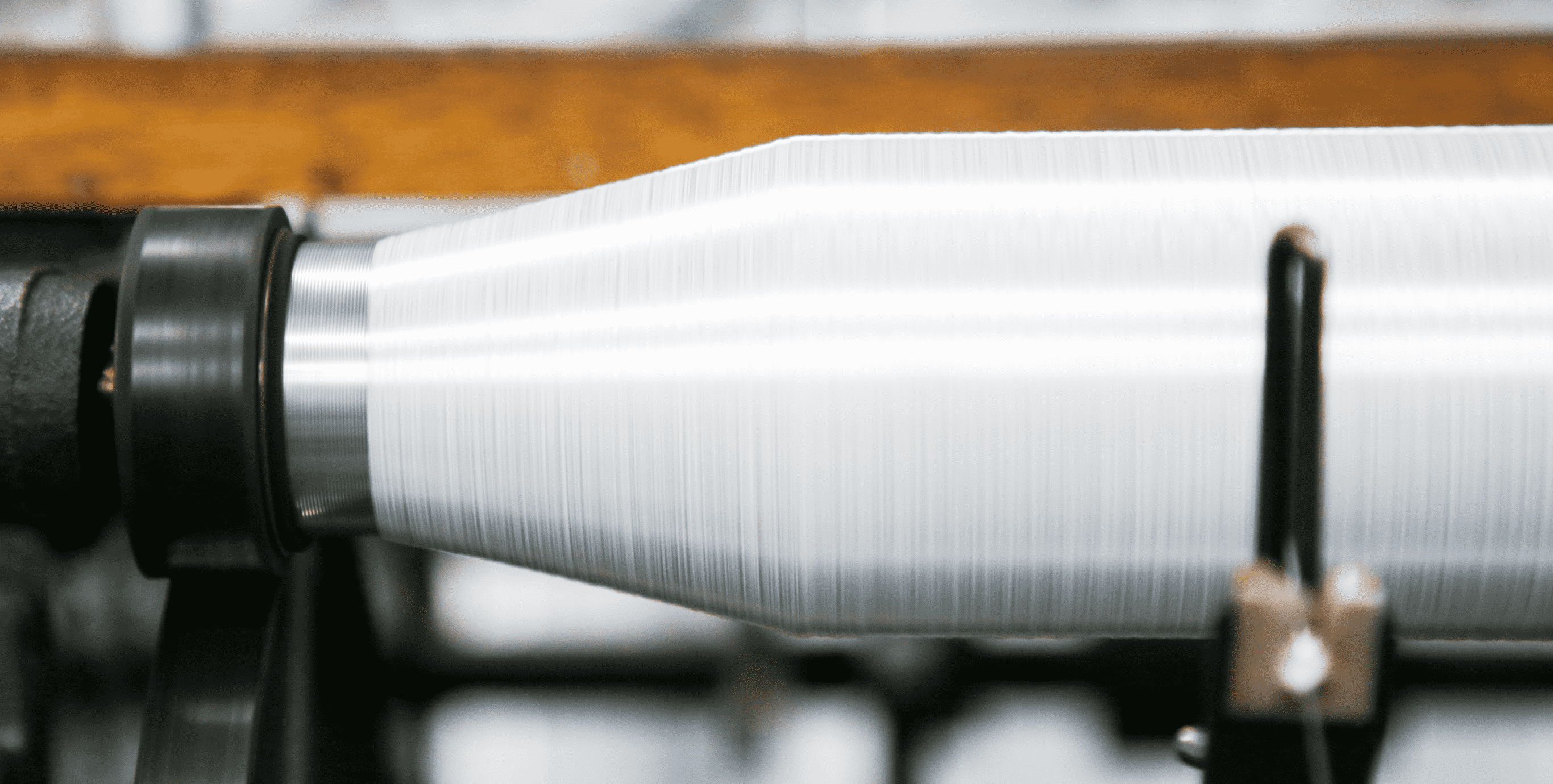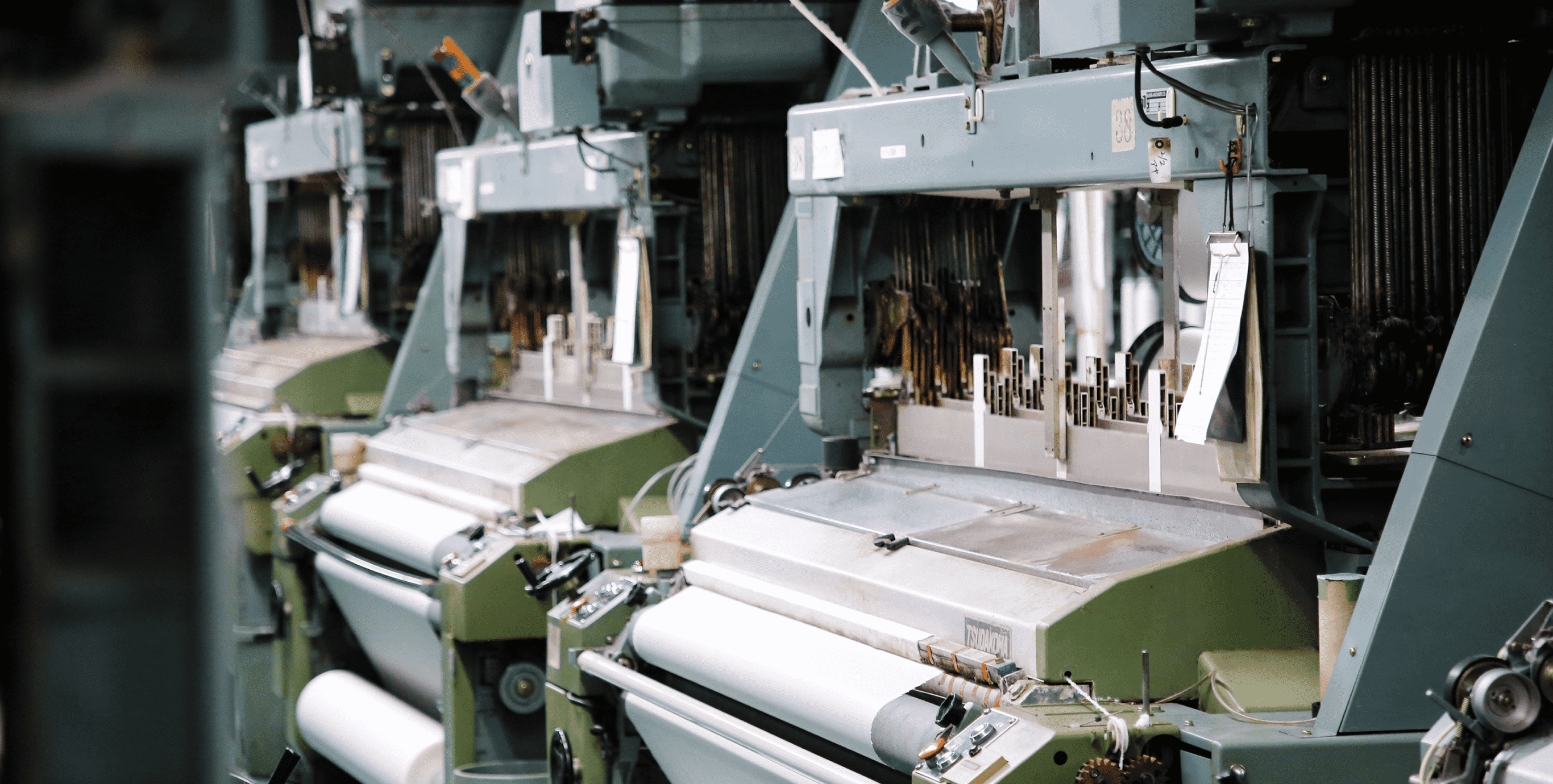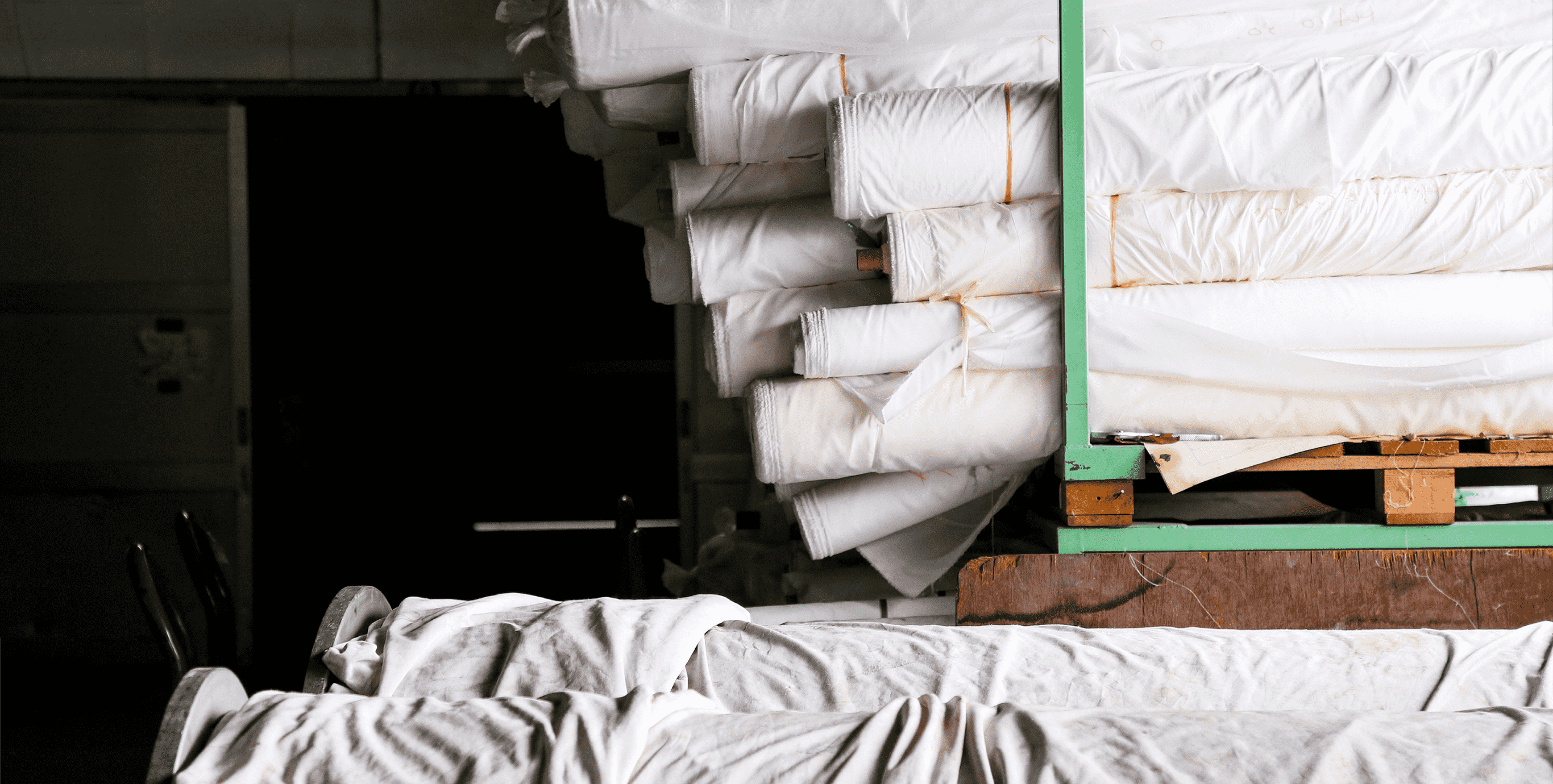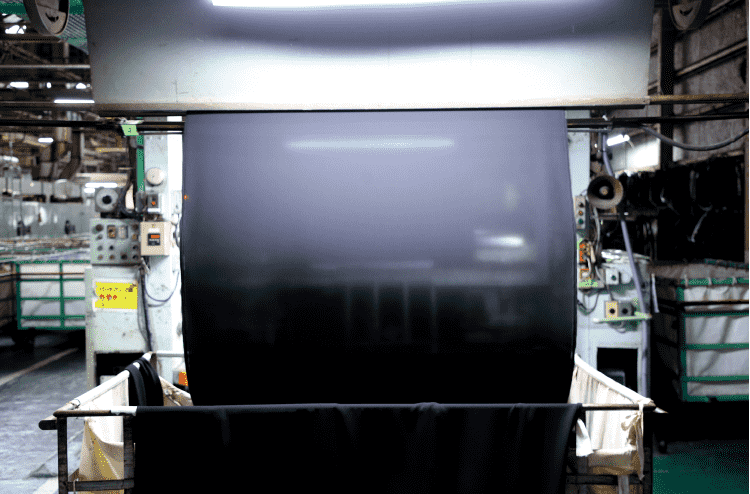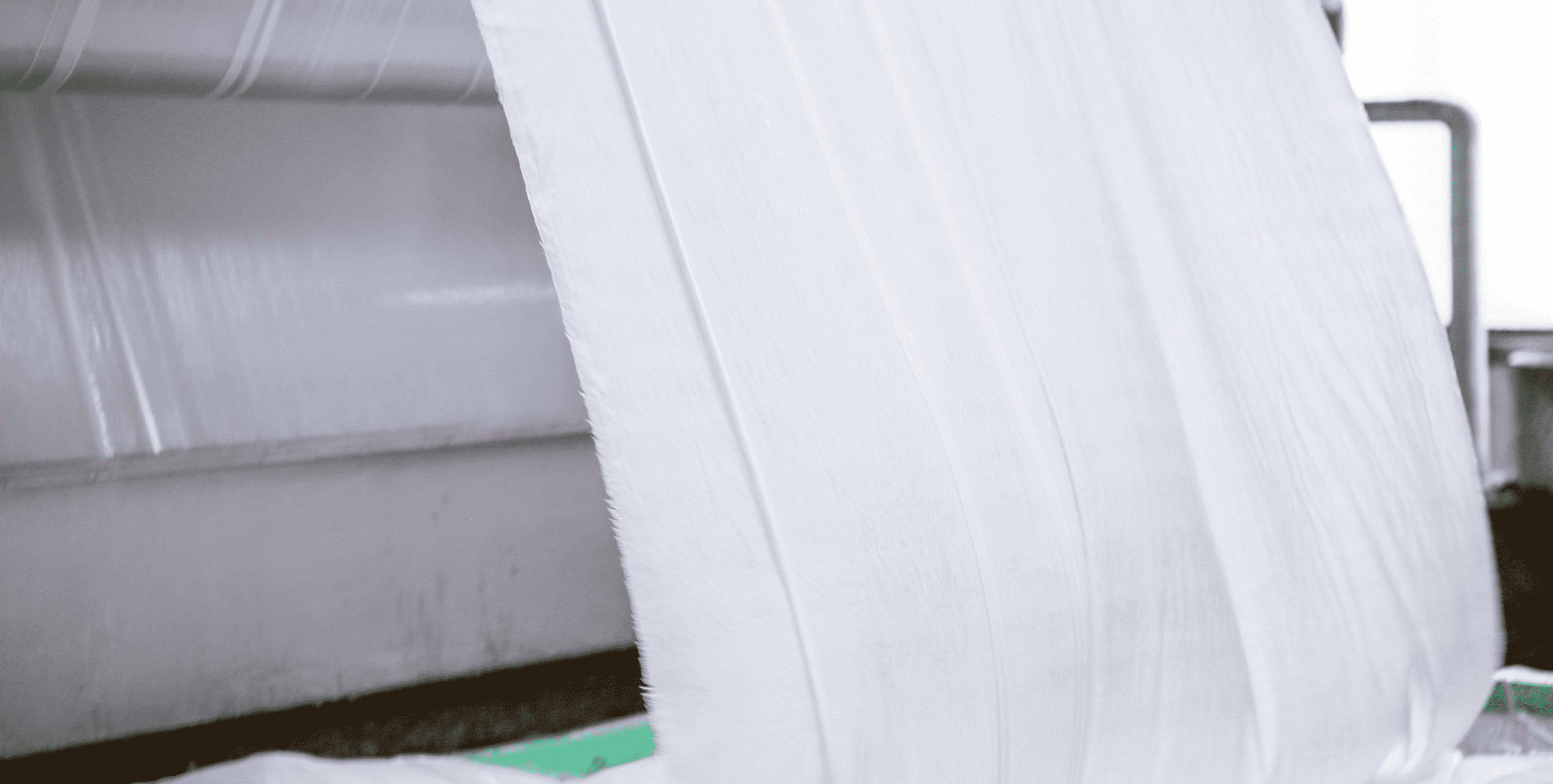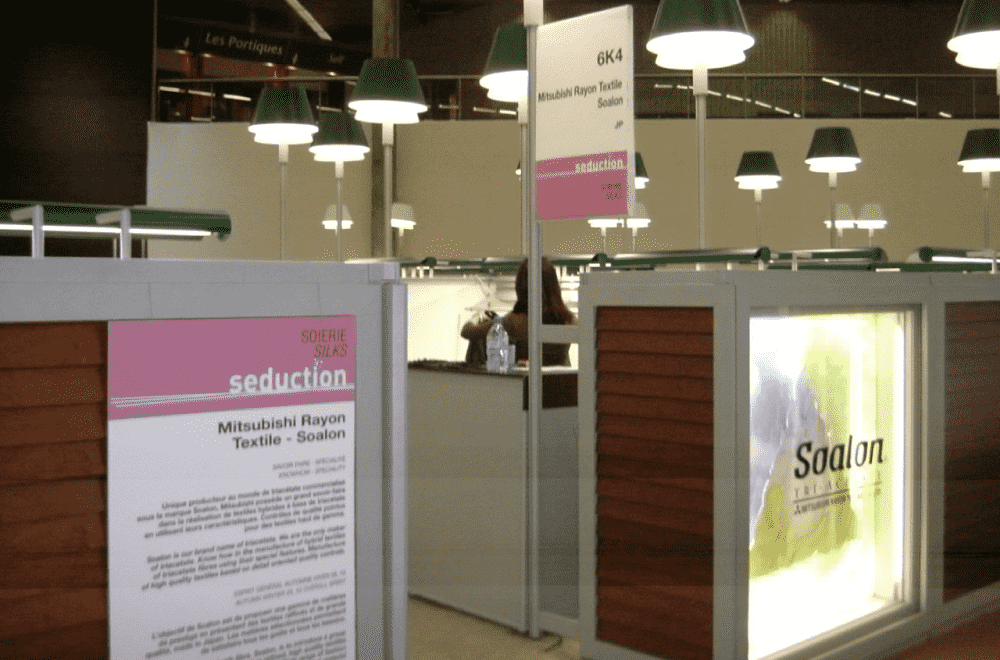MAKING 02 / 03
Weaving
Controlled by computer, but workers’ skill and experience are also needed
After delivery from Mitsubishi Chemical to the weaving factory, the Soalon first undergoes “twisting”, then the twisted yarn undergoes “warping”. This is the job of arranging the required quantity, length, density, etc. of warp yarn. Next, the yarn undergoes drawing-in, which means setting it into a loom in preparation for weaving.There are various types of loom, and we mainly use rapier looms in which the weft yarn is carried by components called rapiers.Once the grey fabric (white fabric before the dyeing process) has been woven, it is closely inspected mechanically and visually by workers for flaws or stains. Only lengths of fabric that meet a certain standard, so-called “A” lengths, are shipped.Nowadays, looms are controlled by computers, but for workers to be able to program these computers takes years of skill and experience.
